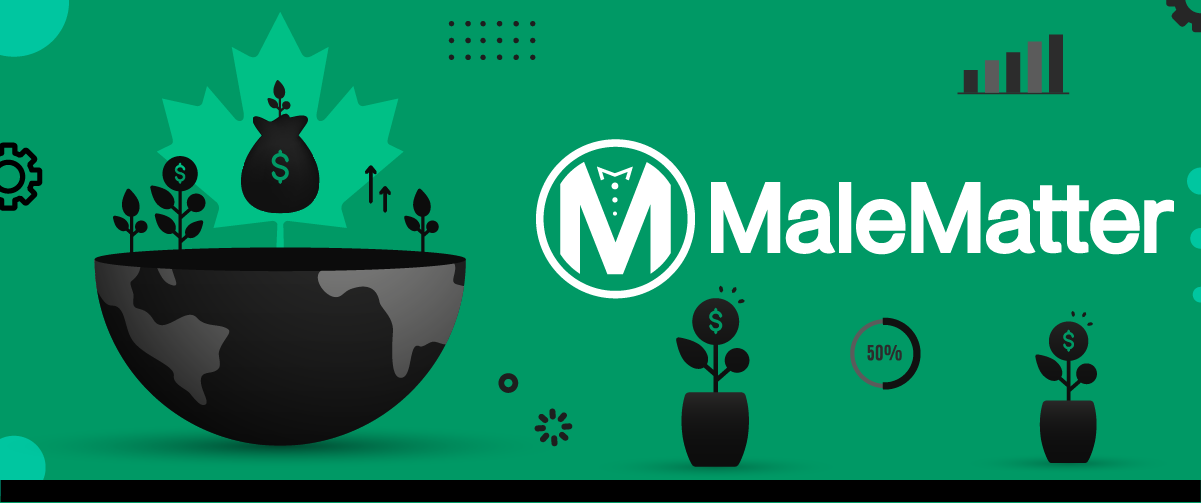 Are you wondering how to start saving for your retirement? Do you think you’re too young to start setting up your retirement fund? While this may be surprising, you are never too young to set up your retirement account. Here is why and how you can start investing today!
Are you wondering how to start saving for your retirement? Do you think you’re too young to start setting up your retirement fund? While this may be surprising, you are never too young to set up your retirement account. Here is why and how you can start investing today!
Why Should You Set Up a Retirement Account?

You have probably imagined what your retirement would look like. Perhaps you want to tour every country in Europe, write your own book, or create your own piano masterpiece. Regardless of what your goals might be, they won’t come to fruition unless you work toward them.
That is why you should consider setting up your retirement account. It doesn’t matter if you are just starting out or you are a few years to retirement. The sooner you get started, the better. If you feel like you are in unfamiliar territory, do not worry this guide was created for you.
Checklist Before Setting Your Retirement Account
Here is a checklist of pre-retirement actions to carry out.
Set Up An Emergency Fund
Life is full of surprises. The novel coronavirus pandemic took the world by surprise and crippled economies. So many people had to rely on government support to survive. You don’t know what the future holds, but you can be prepared for whatever comes. A good rule of thumb is to have between three to six months of operating expenses tucked away in a secure place like a savings account.
One advantage of having an emergency fund is that you won’t have to rely on credit cards or high-interest loans when you need urgent funds.
Save First, Spend Later
Many people spend first, then save whatever is left. If you keep at that, you will have very little or nothing in your savings. The best approach is to save roughly 20% of your income toward your retirement.
Check with your employer to see if you can make direct deposits into your retirement accounts. That would keep you from the temptation of spend first, save later. If your employer offers matching funds, always max out your pension payments.
Create a Will
Everyone will die at some point. If you go through so much to build your retirement account, you have a right to decide where that money should go. When you create a will, you are providing for those that matter to you.
Calculate Your Retirement Expenses
An estimate of your retirement expenses will be of great value to you when setting up your retirement account. You can use guides like this one and replacement ratio calculators to give you an idea of how much you will be spending in your retirement. (Don’t forget taxes and inflation!)
According to retirement account experts, you can expect your retirement expenses to be roughly 70% of your pre-retirement budget.
Set a Retirement Date
Although Canada has no official retirement age, they provide safety nets for citizens when they turn 65. These are the Canada Pension Plan (CPP) and the Old Age Security (OAS). We will discuss them in subsequent headings.
You can decide to retire young and live the dream, or you can work until you are over 65. Retiring early means you have to save a lot of money within a short period. If you chose to retire late, then you can afford to save small amounts over a long period. Check out this article on when you can retire. Ultimately, when you can retire is a function of how much funds you can pool together.

Setting Up Your Retirement Account
There are so many factors that affect your retirement plans and savings. Some are within your control; others aren’t.
Taxes
You can set the tax rates, but you can avoid them by going for tax-free retirement saving plans. For instance, you don’t pay taxes when you withdraw from a TFSA. If you qualify for GIS, you don’t have to pay taxes on that too.
However, your pension and RRSP are taxable. The same applies to OASP benefits if your income exceeds a certain amount.
Location
When you plan to live will determine how much you’ll need when you retire. Smart planners use guides such as those in MSN or International Living to discover affordable international destinations. Others choose to explore domestic alternatives.
If you choose to remain in Canada, you make a solid plan as affordable care facilities have long waiting lists. You might have to fund your housing privately. A report from Canada’s Mortgage and Housing Corporation showed that retirees in Ontario pay more than double the average housing rates of retirees in Quebec.
Your Home
A large percentage of people do not make concrete plans for their retirement. So, to meet their retirement expenses, they are forced to sell their home—which might be their largest single investment.
Selling your home isn’t entirely a bad thing. If you need a more affordable home, feel free to sell. The best part is that you don’t have to pay any tax on the sale of your home.
Inheritance and Other Sources
Aside from your retirement account, you may have an apartment you can rent out, a side business, or even some inheritance. That would affect your retirement positively. As a note on inheritance, don’t depend too much on them. They are sometimes overestimated.
Considering Your Retirement Account
There are two primary sources of retirement funds: your savings and government benefits. We’ll start with government benefits then move to retirement savings accounts.
Government Benefits
Government benefits are gifts from the Canadian government. Some are dependent on how much you contributed, while others are need-based. Here are the popular three:
Old Age Security Pension (OASP) —This is a monthly stipend that most Canadian (65 years old and above) are eligible for.
Canada Pension Plan (CPP) — This is a government program for retirees, disabled Canadians, and relatives of those who die after contributing to the CPP system. You can withdraw from your CPP account as early as 60 years. The CPP benefits you receive will depend on how much you contribute to the system through payroll taxes.
Guaranteed Income Supplement (GIS) — This is targeted at retirees that earn below a fixed amount. The amount changes regularly, so consult the government’s eligibility tables to know if you are eligible.
You have to sign up for CPP via the My Service Canada account. For the OASP and GIS, Service Canada has provided automatic enrolment for senior citizens. You should expect a notification letter the month after you turn 64 of your eligibility. If you do not receive a notification letter, simply print a form from their website and mail it to the Service Canada office closest to you.
Retirement Accounts
The best accounts to consider when setting up your retirement account are tax-advantaged accounts such as GRRSPs, RRSPs, and TFSAs.
Group Registered Retirement Savings Plan (GRRSP) — This is an absolute win as your employer matches your contribution dollar for dollar. Ensure you contribute the maximum amount to get the best out of this plan.
Registered Retirement Savings Plan (RRSP) This is an excellent option for people who do not have access to a GRRSP. It is a great choice as any amount you contribute won’t be taxed until you make a withdrawal. You will also not pay taxes on the gains from the funds. Furthermore, your funds won’t be affected even if you declare bankruptcy.
Tax-Free Savings Plan (TFSA) — For this plan, you pay taxes on your contributions. This is tax-free in the sense that you don’t have to pay any tax when you withdraw or your gains within the account. As an added bonus, you can withdraw from the account at any time.
Final word
Setting up your retirement account isn’t something you should do in a hurry. That said, you shouldn’t put it off until you have confirmed everything about your retirement plan. A good place to start is with your employer to see if you have the GRRSP option. There are other aspects like investments that aren’t covered in this article. You can read about them here. Lastly, make sure to do your own research before making any financial move.
